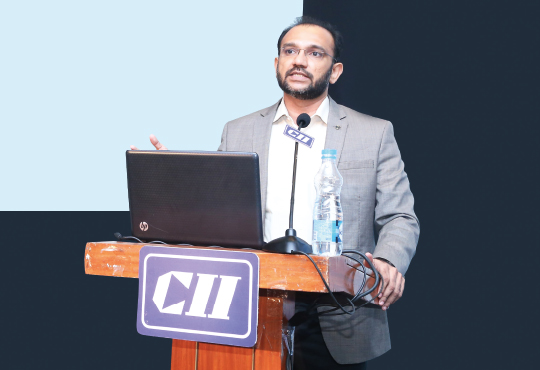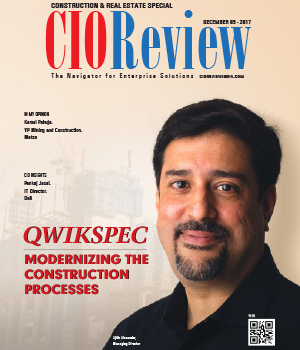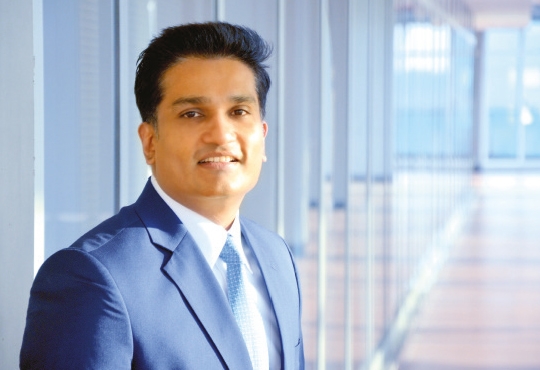
Internet of Things - Managing Projects
Vikrant Sankhe, General Manager Key Account Management, Siemens
 Excitement about invention and technology is omnipresent. Digitalization has made us believe in realities which were distant some years ago. Case in point, IoT. Imagine what life would be like when everything is connected. Where there is a surge in machine-to-machine communication making life simpler and to an extent more virtual, when everything from a streetlamp to a seaport becomes ‘smart’ in the true sense of the word, how every aspect of our lives and business will change? And what would make that possible? Internet of Things!
Excitement about invention and technology is omnipresent. Digitalization has made us believe in realities which were distant some years ago. Case in point, IoT. Imagine what life would be like when everything is connected. Where there is a surge in machine-to-machine communication making life simpler and to an extent more virtual, when everything from a streetlamp to a seaport becomes ‘smart’ in the true sense of the word, how every aspect of our lives and business will change? And what would make that possible? Internet of Things!
The internet has made it possible for seamless collaborations across countries. IoT devices enhance the efficiency and effectiveness of communication and collaboration even more, as information and data is shared automatically between team members regardless of their location. In fact, it was one of the biggest predicted project management trends.
Picture a client discussion scenario, “Just connect the device and get it on-line!” is often asked by the manager while defining the use cases. During customer and user interactions, the primary IoT functions are defined: “We want to receive alarms, read-status, asset-control and verify the communication. All secure of course! Oh, by the way the project needs to be ready in 2 months and we need to have a demo next week for the investors.” Does the situation sound all too familiar?
Now the value of IoT is not technology, but, lies in the creation of new propositions and potential revenue systems. The real value of IoT is at the intersection of gathering data and leveraging it. The information gathered isn’t of much use unless there is an infrastructure in place, to analyze it in real time. Currently, the data used today is mostly for anomaly detection and control, not optimization and prediction provide
the greatest value. This has resulted in a fundamental shift to approach and strategy. Intelligent and smart devices are ones that carry potential to source new products and services with high degree of efficiency.
Some of the biggest challenges faced in the implementation of IoT are end-to-end covering sensors, communication and application. Sensors measure, it evaluates; in short, it gathers data. To put things in perspective, the Internet of Things really comes together with the connection of sensors and machines. Coming back to the challenges faced, managing installations of sensors at field locations and managing these assets post implementation with respect to repairs, warranty, replacement etc. are crucial and should be always given serious thought and consideration
Often we ignore the power of the ‘Platform’ in a hurry to deploy ‘Pilots’. The essence is missed out as the pilot calls for only few of the ‘Things’ to be connected. However, at the end state, there are millions of things that are connected along with associated multiple applications. Another big thing missed, is the firmware updates of these millions of devices in field. Hence, one needs to consider Firmware update OTA (Over The Air) functionality within integrated Platform.
As millions of devices get connected, the amount of data generated will also be BIG! Such massive amounts of unstructured data are of no use to anyone, unless it can be utilized well or has a context. To develop a model that forecasts behavior, data scientists require context and time-series data. Otherwise it becomes very difficult to consume this information and truly see what is happening now and what could happen in the future. People need real-time data to make the best possible decisions. With pervasive monitoring, this information is captured and delivered for business intelligence analysis. This BIG data also calls for the fundamental shift from on-premise to Cloud with Mobile integrated Applications.
One can make technology work efficiently in limited scaling in a ‘point solution’ with isolated business benefit. To scale up to an application having a positive effect on wider business performance requires a concrete plan backed with technological prowess. To be able to build on your initial success, consider the business strategy of your Internet of Things (IoT) project at the start. To effectively deploy IoT within this strategy, planning for robust network infrastructure is critical to be successful. Edge computing provides a means to assure reliability of the service to avoid unplanned downtime with high customer satisfaction. End-users at plants adopting IoT for near real-time predictive maintenance, process optimization and visibility also need a robust architecture with edge computing to assure high data integrity and avoid missed alerts. On the other hand, the automatic transmission of a vast amount of data makes things automatically measurable and analyzable. This in turn, increases the efficiency of processes as decisions can be made quicker. The decisions will also be more accurate because they are based on empirical data. The biggest challenge of having so much data available is data security.
In the recent past, hackers used stolen credentials to gain access to the Ukraine Power Grid and cut power of 30 sub-stations and 225,000 customers. The attack included installation of custom firmware, deletion of files including master boot records, and shutting down of telephone communication. It’s a demonstration of emerging Internet of Things (IoT) hacks: While companies often ignore the security of peripheral devices or networks, the consequences can be disastrous.
Hence, security will need to be considered at various levels such as the platform, communication, sensor security and third party integration security among other things.
We need a scalable Open Cloud Platform like MindSphere with data analytics and connectivity capabilities, tools for developers, applications and services covering end-to-end Security.
When we begin making things intelligent, it’s going to be a major engine for creating new products and new services. We need to evaluate and utilize data and to gain breakthrough insights, drive the performance and optimization of assets for maximized uptime and also establish feedback for design improvisation as an ongoing process.
The Internet of Things is probably the biggest trend that’s taking place in the world of technology as we speak. It is one that is going to give us the most disruption as well opportunity over the next few years. And hence managing the scale by design is utmost important.
CIO Viewpoint
Why Foolproof Facial Recognition Is Key Against...
By Joseph Sudheer Thumma, Global CEO & MD, Magellanic Cloud
National Technology Day 2025: Powering Progress...
By CIOTech Outlook Team
Aligning IT Roadmap with Business Objectives: A...
By Subhash singh Punjabi, CISO & Head Enterprise Architecture, Deepak Fertilisers & Petrochemicals Corporation Ltd
CXO Insights
Sustainable Building Practices Shaping the...
By Kripadyuti Sarkar, Group CIO, Ambuja Neotia
Building Information Modeling (BIM) in the...
By Hetal Presswala, Chief Information Security Officer, Kalpatharu Projects International ltd
6 Transformative Impacts of Technology on Real...




.jpg)




